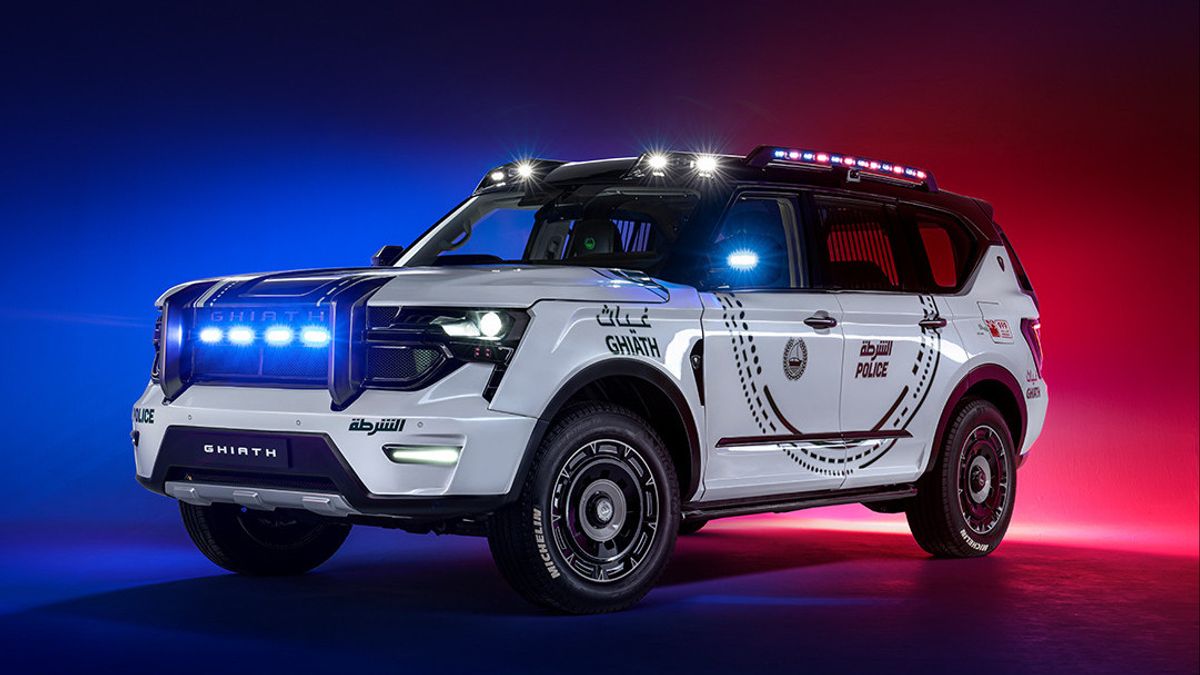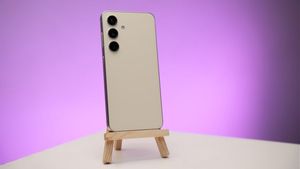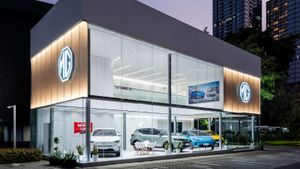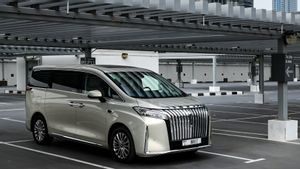JAKARTA - Famous for its ranks of luxury and technological cars, the Dubai police, United Arab Emirates (UAE) are now also supported by smart patrol cars to carry out their duties.
"The day the patrol officer in this vehicle starts with him getting into the system you see in front of you," said First Lieutenant Mohamed Zainal engineer, pointing to an integrated 16-inch mid-screen in Ghiath's new smart patrol car. November 11th.
The state-of-the-art on-board computer, which is connected to the Dubai Police command and control center, could show any incident that occurred in the area.
"Once he received the incident report, he had a certain KPI (main performance indicator), which in a matter of minutes responded to the incident," Zainal said.
He pressed a button behind the wheel, prompting the SUV to start walking smoothly and quickly.
The National joins officers from Dubai Police Technical and Innovation units in Ghiath, the latest type of patrol car to be introduced to the troop fleet.
The vehicle was launched in March at the World Police Summit at the Dubai Exhibition Center at Expo 2020 Dubai. They were produced in the UAE by automaker Emirate W Motors. Hardicraft and software are tailored to meet Dubai Police requirements.
Thirty percent interior and exterior parts of the car are printed 3D. The cars are equipped with advanced technology, functionality and reliability.
Currently, 10 Ghiath vehicles are patrolling the streets of Dubai. A total of 400 Ghiath patrol cars will be introduced over the next five years.
"We have plans to work on 16 other designs. We will have a Ghiath tricycle, a Ghiath bike, an autonomous Ghiath and an electric-powered Ghiath," he explained.
"We are looking for different versions such as the rescue Ghiath, Ghiath path, and the first responders Ghiath," he continued.
The vehicle was named Ghiath by Sheikh Hamdan bin Mohammed, Dubai Crown Prince.
"Just like the eagle, this vehicle also responded quickly to the incident that occurred in the Dubai emirate," said Zainal.
"Ghiath's car has 10 external cameras while the other patrol vehicles have eight," he added.
"With more cameras, it can do more AI-related processing. You can, for example, in the future, add more AI algorithms to it. When you have more cameras, you can collect more data. That's the advantage of this vehicle," he said.
Another feature that Ghiath features is the presence of a multi-camera screen on the right side of the dashboard. The screen displays a warning when you see a 'wanted' number plate.
The vehicle also has a 360-degree camera on the roof with sliding, tilting and zoom capabilities, Zainal said when zooming into the nearest building, zooming in 30 times.
The central screen gives officers access to different software, including one to find the owner of the vehicle from the license plate captured by the Ghiath camera.
"We can read the vehicle number plate and if the plate is desired, the information is sent to the operating room and the officer in the car is also notified," said Zainal.
"However, this function is used when the patrol car is not moving. It is not used while moving so the driver is not disturbed," he said.
In addition, there are two internal cameras that record videos in the car cabin. One of the cameras monitors driver behavior.
"If he is tired, if he doesn't pay attention or if his hands don't, for example, on the steering wheel or if he is disturbed, the camera will remind him," he said.
Not only that, Ghiath smart patrols have a compartment in the trunk to store rescue and safety equipment, and a custom-made drone box with advanced drones, which can fly up to 30 minutes.
Drones equipped with thermal cameras and today's afternoon cameras, can send direct information to the command and control room.
"Officers are trained how to use drones based on the incident. If it is a traffic incident, drones are used in a certain way. If this is a rescue mission, drones are used in other ways because you have three different payloads," Zainal explained.
Officers also received training that allowed them to respond to the maximum number of incidents.
"They were trained to be the first responders. They were trained using first aid boxes. They were also trained to use the system," explained Zainal.
"This is the unique thing about the officers driving this vehicle," he concluded.
The English, Chinese, Japanese, Arabic, and French versions are automatically generated by the AI. So there may still be inaccuracies in translating, please always see Indonesian as our main language. (system supported by DigitalSiber.id)













